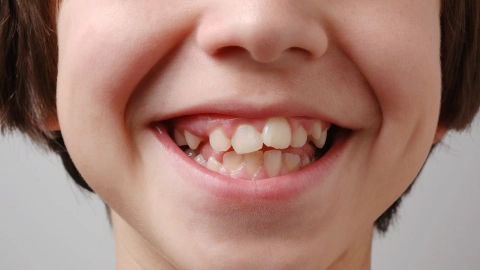ICD-Code K07.2: Anomalies of dental arch relationship
Your top and bottom rows of teeth are not properly aligned with each other.
The top row of teeth consists of all the teeth in the upper jaw. The bottom row of teeth consists of all the teeth in the lower jaw. The two rows of teeth usually rest on each other in a particular way when you bite.
When the rows do not align correctly, there are different ways in which your appearance can vary. For example, the row of teeth in the lower jaw might sit further forwards or backwards than usual. The row of teeth in the upper jaw can also sit too far forwards. They then jut further over the lower teeth than usual. It may also be that the two rows of teeth do not even touch one another at the front or sides when your mouth is closed. If the rows of teeth are displaced to the side, the side teeth will not align properly with one another. It may also be that the center of the top row of teeth and the center of the bottom row of teeth do not align exactly. Normally when you bite, the centers of the two rows of teeth meet one another.
Additional indicator
On medical documents, the ICD code is often appended by letters that indicate the diagnostic certainty or the affected side of the body.
- G: Confirmed diagnosis
- V: Tentative diagnosis
- Z: Condition after
- A: Excluded diagnosis
- L: Left
- R: Right
- B: Both sides
Further information
Source
Provided by the non-profit organization “Was hab’ ich?” gemeinnützige GmbH on behalf of the Federal Ministry of Health (BMG).

